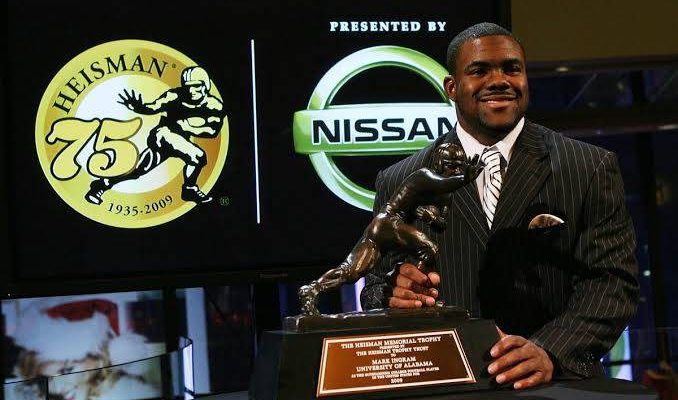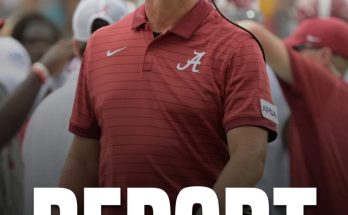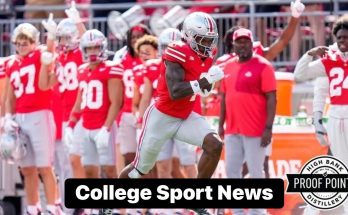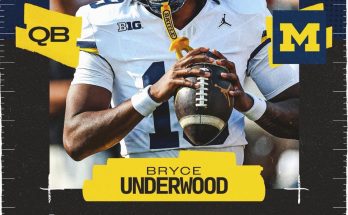**Mark Ingram II Back in Tuscaloosa: Alabama’s First Heisman Winner Returns to Crimson Tide Football in Pivotal Role**
The University of Alabama football program has long been defined by its legends—players and coaches who have left an indelible mark on the sport. Few names resonate as deeply as Mark Ingram II, the dynamic running back who, in 2009, became the first player in Crimson Tide history to win the Heisman Trophy. Now, more than a decade after his electrifying college career, Ingram is returning to Tuscaloosa, not as a player, but in a pivotal role that could shape the future of Alabama football. His homecoming is more than just a nostalgic reunion; it’s a strategic addition that bridges the program’s storied past with its relentless pursuit of future championships.
Ingram’s return to Alabama comes at a fascinating time for the program. The Crimson Tide, under the guidance of head coach Kalen DeBoer, is navigating a new era following the retirement of Nick Saban, the architect of Alabama’s modern dynasty. Saban’s departure left colossal shoes to fill, and DeBoer’s task is not just to maintain excellence but to evolve it. Bringing Ingram back into the fold—whether as an analyst, ambassador, or in a more hands-on coaching capacity—signals a commitment to preserving the culture that made Alabama a powerhouse while infusing fresh energy into the locker room.
For Alabama fans, Ingram’s presence is a reminder of one of the program’s most magical seasons. In 2009, he rushed for 1,658 yards and 17 touchdowns, carrying the Tide to a perfect 14-0 season and a national championship. His Heisman moment—a bruising, 69-yard performance against Florida in the SEC Championship Game—cemented his legacy as one of college football’s all-time greats. But beyond the stats, Ingram embodied the toughness, humility, and relentless work ethic that became synonymous with Saban’s teams. Now, he has the chance to impart those same values to a new generation of players.
The specifics of Ingram’s role are still taking shape, but his potential impact is undeniable. If he steps into a coaching or mentorship position, he could be an invaluable resource for Alabama’s current running backs, including rising stars like Jam Miller and Justice Haynes. Ingram’s understanding of the position—from pass protection to route running—is matched only by his ability to connect with players. Having recently retired from the NFL after a 12-year career, he brings contemporary knowledge of the game’s evolution, something that could prove crucial in player development and recruiting.
Recruiting, in particular, is an area where Ingram’s influence could be transformative. Alabama’s ability to attract elite talent has been the lifeblood of its dominance, and few can speak to the program’s allure better than Ingram. As a Heisman winner and national champion, he can authentically articulate what it means to wear the crimson and white. His charisma and credibility could help the Tide secure the next wave of five-star prospects, especially as rival programs like Georgia, Ohio State, and Texas continue to vie for supremacy.
Beyond the X’s and O’s, Ingram’s return is a symbolic victory for Alabama. In an era where college football is increasingly transactional, with players jumping teams via the transfer portal and NIL deals reshaping loyalties, Ingram represents a link to a time when legacies were built over years, not months. His decision to come back speaks volumes about his love for the program and his belief in its future. It’s a testament to the enduring power of Alabama’s culture—one that rewards excellence but also fosters lifelong bonds.
Of course, the transition from player to staff member isn’t without its challenges. Coaching requires a different skill set than playing, and Ingram will need to adapt to the demands of teaching, game planning, and the relentless grind of recruiting. But if his career is any indication, he’s more than up for the task. Ingram has always been a student of the game, and his football IQ was evident long before he turned pro. Moreover, his infectious energy and leadership qualities—traits that made him a beloved figure in every locker room he occupied—will serve him well in his new role.
For the fans, Ingram’s return is a reason to celebrate. Social media erupted with excitement when news of his involvement broke, a reminder of how deeply he’s cherished in Tuscaloosa. His jersey still hangs in homes across Alabama, and his highlights remain a staple of Crimson Tide nostalgia. Now, they’ll get to see him on the sidelines, offering guidance, celebrating touchdowns, and perhaps even delivering the occasional fiery pep talk.
As Alabama embarks on a new chapter, Ingram’s presence is a reassuring constant. The program may have a new head coach, a revamped roster, and fresh challenges in the expanded SEC, but some things never change. The standard—set by legends like Ingram—remains the same. Championships are the expectation, and excellence is the baseline. With Ingram back in the fold, the Crimson Tide isn’t just honoring its past; it’s investing in its future.
The road ahead won’t be easy. The SEC is more competitive than ever, and Alabama’s margin for error is razor-thin. But with Mark Ingram II back in Tuscaloosa, the Tide gains more than just a familiar face. It gains a leader, a mentor, and a living testament to what Alabama football stands for. And if history is any indication, that’s a combination that leads to greatness.



